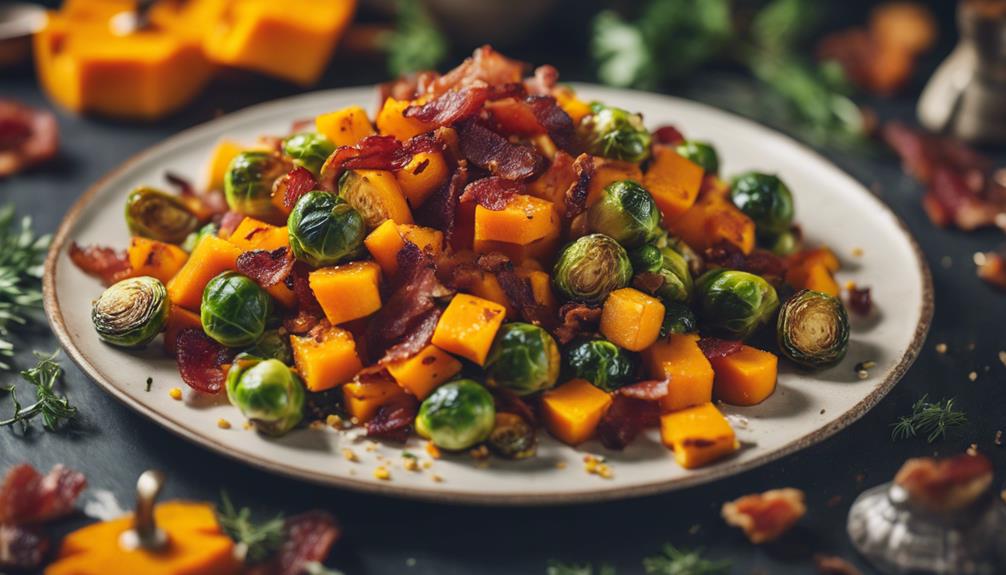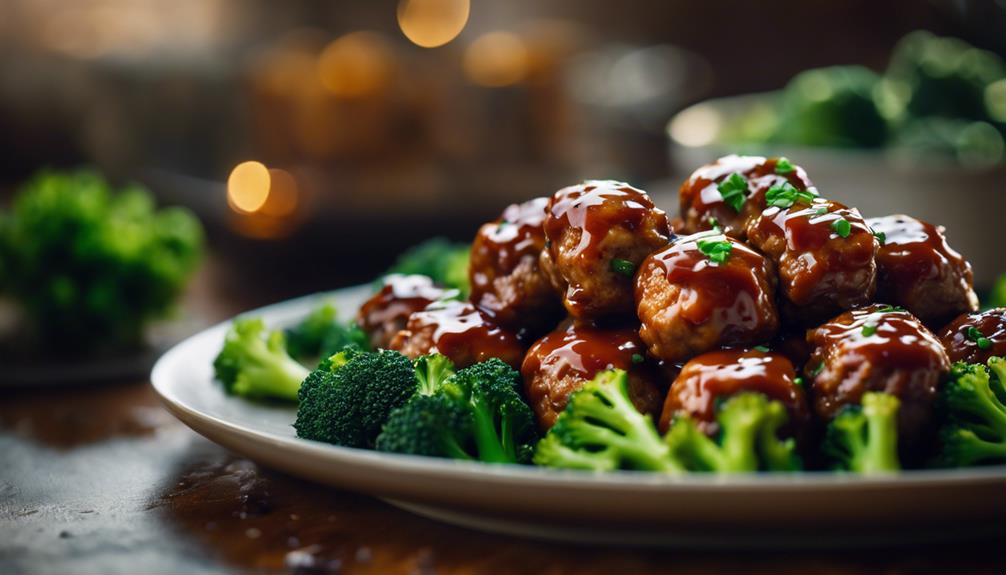Hunger severely impacts your decision-making abilities. When you're hungry, your body releases ghrelin, which heightens impulsivity and distorts your judgment. You're more likely to chase immediate rewards instead of considering long-term benefits, often leading to riskier choices. This effect can range from financial decisions to everyday life choices. Furthermore, low nutrition can impair cognitive function, making it harder to think clearly. By stabilizing your blood sugar and ensuring proper nutrition, you can make better decisions. There's so much more to discover about how hunger plays a role in your choices and overall well-being.
Key Takeaways
- Hunger elevates ghrelin levels, increasing impulsivity and preference for immediate rewards while diminishing long-term planning.
- Cognitive impairments from hunger lead to poor judgment and riskier financial decisions.
- Nutritional deficiencies can exacerbate hunger's negative effects on decision-making, causing fatigue and irritability.
- Mindful eating and regular meal planning can stabilize blood sugar levels, reducing impulsivity and enhancing cognitive function.
- Chronic hunger can perpetuate cycles of poverty and increase the risk of mental health disorders.
The Science of Hunger

Hunger plays an essential role in shaping how we make decisions. When you're hungry, your body releases ghrelin, a hormone that markedly impacts your decision-making processes. This surge in ghrelin increases impulsivity, making you more inclined to chase immediate rewards rather than wait for delayed ones.
For instance, the craving for rich flavors, like those found in red-braised pork belly, can amplify your desire for instant gratification. Research shows that when you're hungry, your willingness to wait for rewards can plummet from an average of 35 days to just 3 days.
This effect isn't limited to food; hunger can skew broader choices, leading you to engage in riskier behaviors, whether in financial decisions or interpersonal relationships. The hippocampus, a crucial area for decision-making, shows altered neural activity when you're hungry, which affects how you evaluate potential rewards and risks.
Moreover, hunger often brings cognitive impairments, including decision fatigue and emotional dysregulation. These factors complicate your judgment, making it harder to make quality choices.
As you navigate hunger's effects, you'll find that it doesn't just impact what's on your plate; it profoundly influences the decisions you make every day.
Impulsivity and Reward Choices

When faced with an empty stomach, you're likely to find yourself drawn to immediate rewards, often at the expense of more significant, long-term benefits. Hunger boosts impulsivity, making you prefer smaller, immediate gratification over larger, delayed rewards. This is similar to the allure of traditional Indonesian desserts like Kue Putu, which provide instant sweetness and comfort.
Research shows that when hungry, your willingness to wait for double rewards drops dramatically—from 35 days to just 3 days. This impulsivity isn't limited to food; it affects your financial choices too.
The Marshmallow test illustrates this well, revealing that hungry children are more inclined to choose instant rewards, highlighting a trend seen across all age groups. Ghrelin, the hunger hormone, plays an essential role here, ramping up impulsivity and distorting how you assess reward value.
As a result, hunger can lead to maladaptive behaviors, pushing you toward poor financial decisions that prioritize short-term gains over long-term stability.
When you're hungry, your preferences shift dramatically, influencing your decision-making process and leading to choices you might later regret. Being aware of this can help you pause and reassess your options, potentially steering you back toward more balanced decisions.
Hormonal Influences on Decisions

Many people underestimate the profound impact hormones have on decision-making, especially in states of hunger. When your body experiences hunger, it releases ghrelin, a hormone that markedly influences your choices. Elevated ghrelin levels are linked to increased impulsivity, often leading you to make irrational decisions focused on immediate rewards rather than long-term benefits.
This impulsivity can be paralleled with cravings for certain foods, such as the comforting sweetness of Brigadeiro, which may further distract from rational decision-making.
Hunger-induced hormonal changes can shift your decision-making strategies from thoughtful planning to more impulsive, reinforcement-driven behavior. This means you may find yourself opting for smaller, instant rewards instead of larger, delayed ones, as your valuation processes get skewed.
Furthermore, the interplay between hunger hormones and neurotransmitters like dopamine can alter your risk assessment. As your hunger increases, you might become more aggressive in your decisions, whether in financial matters or personal relationships.
This heightened impulsivity and altered risk perception can lead to choices that you might later regret.
Understanding these hormonal influences on decision-making can help you navigate situations where hunger might cloud your judgment, allowing for better choices that align with your long-term goals.
Nutrition's Impact on Cognition

The quality of your nutrition plays a significant role in shaping your cognitive abilities and decision-making skills. A balanced diet supports brain health, while poor food choices can lead to impulsivity and cognitive decline. For instance, incorporating dishes like Mushroom Masala into your meals can provide a rich blend of nutrients that enhance cognitive performance.
Here are three key points to evaluate:
- Nutritional deficiencies can lead to fatigue and impair cognitive performance, making it harder to make sound decisions.
- Caloric restriction may negatively affect your decision-making skills, even when you're not hungry, emphasizing the need for consistent nutrition.
- A diet rich in essential nutrients enhances your cognition, improving your ability to assess food incentives and make informed choices.
When you regularly consume junk food, it can create inflammation in your brain, further complicating your decision-making processes. This can manifest as poor judgment in financial or interpersonal situations.
Regular nutritional assessments can help you identify any deficiencies that may hinder your cognitive function. By prioritizing proper nutrition, you not only improve your brain health but also enhance your overall decision-making abilities.
Mineral Deficiencies and Decision-Making

Mineral deficiencies can greatly cloud your decision-making abilities, leading to poor choices that stem from decreased mental clarity. When you're low on essential minerals like iron or magnesium, you may experience cognitive impairments that hinder your ability to think clearly.
Consuming a diet rich in minerals is vital, as seen in traditional Ethiopian dishes that offer a variety of nutrient-rich ingredients. Symptoms such as fatigue and irritability can make hunger feel more intense, which can further exacerbate poor decision-making through increased impulsivity.
Chronic mineral deficits not only compromise your immune function but also lower your energy levels, contributing to stress. Elevated stress can increase cortisol levels, which negatively affects mineral absorption. This chain reaction can leave you more prone to making hasty choices, as your cognitive function is impaired.
To combat these issues, regular nutritional assessments can help identify any mineral deficiencies that might be impacting your cognitive health. By addressing these deficiencies, you can improve your mental clarity and make better decisions.
Incorporating nutrient-rich foods into your diet can also help balance food rewards, promoting healthier choices when you're feeling stressed or hungry. Ultimately, addressing mineral deficiencies can lead to better decision-making and a more balanced life.
Lifestyle Factors Affecting Hunger

Lifestyle choices play an essential role in how hunger influences your decision-making. The foods you consume can dramatically affect your cognitive function and impulsivity, shaping the choices you make when you're hungry. For instance, incorporating nutrient-dense options like Nettle and Potato Soup can enhance your overall well-being and decision-making capabilities. In contrast, a diet high in processed and sugary foods can diminish cognitive performance, leading to poorer decisions and increased impulsivity, especially when hunger strikes. Additionally, the environmental effects of eating habits should not be overlooked, as choosing locally sourced and sustainably produced foods can help reduce the ecological footprint of your diet. By prioritizing these healthier and more sustainable options, you not only improve your mental clarity but also contribute to a more sustainable food system.
Here are three key factors to take into account:
- Diet Quality: A balanced diet rich in nutrients supports your overall health and cognitive function, reducing impulsivity related to hunger.
- Sugar and Processed Foods: High intake of sugary and processed foods can lead to sharp blood sugar fluctuations, increasing feelings of hunger and driving poor decision-making.
- Caffeine and Alcohol: Chronic caffeine and alcohol consumption can deplete essential nutrients, impairing cognitive abilities and exacerbating hunger-related issues.
When you prioritize nutrition, you're not just fueling your body; you're also enhancing your mental health and decision-making capabilities.
By being mindful of your food preferences and avoiding high-sugar or highly processed options, you can mitigate the impulsivity that often accompanies hunger.
Ultimately, understanding how your lifestyle factors affect hunger can help you make better choices and maintain peak cognitive function, even in times of craving.
Experimental Evidence of Effects

Hunger dramatically skews your decision-making process, pushing you toward impulsive choices. When you're hungry, your preferences shift considerably, favoring immediate rewards over larger delayed ones. Research shows that after just 14 hours of fasting, your willingness to wait for a double reward plummets from 35 days to a mere 3 days.
This impulsivity isn't limited to food-related decisions; it spans various contexts, highlighting the broader implications of hunger on your behavior. Curiously, the desire for quick snacks, like a Graveyard Taco Dip, can also exacerbate these impulsive choices, as you crave instant satisfaction.
In experimental settings, you've likely noticed a stronger inclination to choose immediate rewards, demonstrating how hunger influences your decision-making strategies. Studies using a two-stage decision-making task reveal that hunger increases reliance on model-free strategies, enhancing performance while leaving model-based control intact.
Additionally, as your hunger levels rise, you may experience behavioral changes, like a greater tendency to 'stay' after receiving rewards.
Statistical analyses confirm that hunger considerably impacts your stay-switch behavior after receiving rewards or facing omissions, underscoring the complex relationship between hunger and decision-making.
Ultimately, understanding these effects can help you navigate your choices better, especially when hunger influences your judgment.
Long-Term Implications for Health

Chronic hunger and inadequate nutrition can have serious long-term effects on your health and decision-making abilities. Here are three essential implications to take into account:
- Cognitive Impairments: Prolonged hunger leads to reduced cognitive flexibility, affecting your ability to make informed decisions. For instance, as with the complexities of preparing a traditional dish like Dorayaki, understanding flavors and techniques requires mental clarity that hunger can diminish.
- Impulsive Behaviors: When you're hungry, you're more likely to engage in impulsive behaviors, which can result in poor financial decisions and entrench you in a cycle of poverty. This impulsivity may mirror the quick decisions one might make when craving a comfort food, akin to the indulgence of Hiyashi Chuka, rather than weighing healthier, more balanced options.
- Mental Health Disorders: Insufficient nutrition increases the risk of developing mental health disorders, such as anxiety and depression, further complicating your decision-making processes.
The consequences of caloric restriction and nutrient deficiencies go beyond immediate hunger. They can compromise your immune function and overall health, making you more vulnerable to diseases.
This cycle of maladaptive behaviors can lead to obesity and eating disorders, perpetuating health issues and cognitive decline. As your nutrition deteriorates, your ability to make sound financial decisions and maintain mental wellness wanes.
Addressing these long-term implications is essential for breaking free from the harmful effects of hunger and improving your overall quality of life.
Strategies for Better Decision-Making

To make better decisions when hunger strikes, you can adopt mindful eating practices and stick to a regular meal schedule.
Incorporating a variety of nutrient-rich foods, such as those found in traditional Italian cuisine like braised beef in Barolo wine or pasta with tomato sauce, can further enhance your cognitive function.
By planning your meals, you stabilize your blood sugar levels, which boosts your cognitive function.
This way, you'll be less likely to make impulsive choices that you might regret later.
Mindful Eating Practices
When you take the time to practice mindful eating, you're not just enjoying your food—you're also making smarter decisions about what you consume. For instance, enjoying dishes like Chilaquiles or Quesadillas can enhance your appreciation for flavors while allowing you to tune into your body's signals.
By tuning into your body and its signals, you can reduce impulsivity and enhance your decision-making process. Here are three powerful benefits of mindful eating:
- Awareness of Hunger Cues: Recognizing your hunger cues helps prevent overeating, leading to greater satisfaction with smaller portions.
- Improved Cognitive Function: Implementing regular meal schedules stabilizes your blood sugar levels, which is essential for maintaining focus and reducing decision fatigue.
- Intentional Dietary Decisions: Using mindfulness techniques like deep breathing before meals can lower stress, allowing you to make balanced choices more easily.
Incorporating healthy snacking options mindfully can also alleviate hunger-induced impulsivity. This approach enables you to savor each bite and make intentional dietary decisions that align with your goals.
Scheduled Meal Planning
Scheduled meal planning plays an essential role in enhancing your decision-making abilities, especially when it comes to food choices. By planning meals ahead of time, you can avoid the impulsivity that often comes with hunger. When you have healthy options prepared, you're less likely to make hasty decisions that lead to unhealthy eating.
Eating at regular intervals stabilizes blood sugar levels, which boosts your cognitive function and allows for clearer, more rational decision-making throughout the day.
Incorporating nutrient-rich foods into your scheduled meals supports peak brain performance. Deficiencies in essential nutrients can impair your cognitive abilities, making it harder to think critically about your food choices.
Practicing mindful eating within your meal planning adds another layer of awareness. By paying attention to your hunger cues and savoring each meal, you enhance the quality of your choices.
Ultimately, scheduled meal planning not only helps manage hunger but also reduces decision fatigue. With a clear plan in place, you can navigate your food options with greater confidence and mindfulness, ensuring you make choices that support your health and well-being.
Frequently Asked Questions
How Does Hunger Affect Decision-Making?
When you're hungry, your ability to think clearly diminishes. You tend to make quick, impulsive choices, often favoring immediate rewards over better long-term options. This can lead to regrettable decisions in various aspects of life.
How Does Food Affect Decision-Making?
Food can turn your brain into a superhero or a sleepy sloth. When you nourish yourself well, you make sharper decisions. Junk food, however, clouds your judgment, leading to choices you might regret later.
How Does Hunger Affect Thinking?
When you're hungry, your brain struggles to think clearly. You'll find it harder to focus, make rational choices, and solve problems. This mental fog can lead to impulsive decisions and decreased overall cognitive performance.
How Does Hunger Affect Food Choice?
When you're hungry, you often choose quick, high-calorie foods instead of healthier options. Your cravings for immediate satisfaction overpower your ability to think about long-term health, leading to impulsive and less nutritious food choices.
Conclusion
In the grand theater of life, hunger can play a starring role in your decision-making. Just as Odysseus faced temptations that led him astray, you might find yourself swayed by cravings or impulsivity when hunger strikes. Recognizing how hunger influences your choices empowers you to navigate life's decisions with clarity. By understanding the interplay of nutrition, hormones, and lifestyle, you can make choices that lead to a healthier, more fulfilling journey. Don't let hunger script your story.









